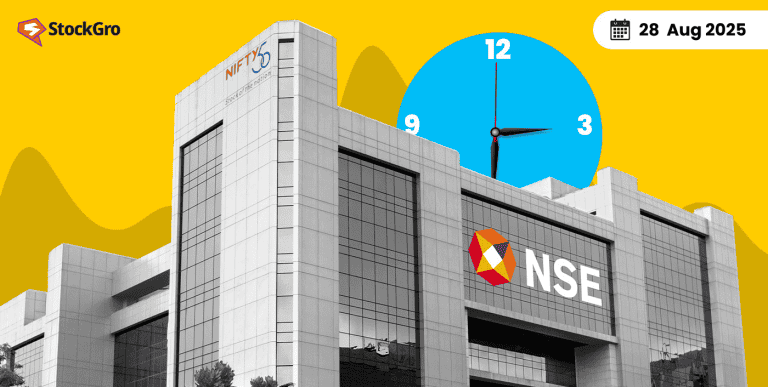
Analysing a mutual fund’s performance is critical for an investor’s assessment. One metric, called ‘alpha’, helps you assess the risk-adjusted performance of a fund. Fundamentally, an alpha ratio is used to show a fund’s performance as opposed to the benchmark.
Want to understand the meaning, significance, and functionality of alpha in mutual funds? This blog is your guide.
What Alpha Is in Mutual Funds?
Alpha in a mutual fund is a measure of the additional return, where outperformance of a mutual fund scheme compared to its benchmark. It reveals the capabilities of the fund manager’s skill beyond market fluctuations. In other words, it shows the extra return achieved by the fund above the benchmark return.
Essentially, alpha measures whether a mutual fund has truly delivered superior, risk-adjusted returns over its benchmark index, making it a crucial metric for investors seeking to evaluate fund performance and managerial expertise.
Understanding Alpha in Mutual Fund Performance
An alpha in a mutual fund is considered a quantitative measure of a fund’s performance. In this regard,
- A positive alpha means the fund has delivered returns higher than its benchmark.
- A negative alpha shows the fund has underperformed compared to its benchmark.
- A ‘zero’ alpha suggests that the fund is at par with its benchmark.
How is Alpha Calculated in Mutual Funds?
Alpha in a mutual fund is calculated through the Capital Asset Pricing Model (CAPM). The formula is:
Alpha = (Fund Return – Riskfree Return)- [ β (Benchmark Return- Riskfree Return) ]
Where,
- Fund Return is the actual return earned by the mutual fund
- Risk-free return refers to the rate of return earned from an investment that carries virtually no risk of financial loss, such as government-issued treasury bills.
- Beta (β) is the fund’s sensitivity to market/benchmark risk.
- And, Benchmark Return is the mutual fund’s chosen benchmark index’s return.
Example: How Alpha Reflects Fund Performance
This formula can be better explained with the help of an example.
Suppose you invested in a large-cap mutual fund that delivered 14% returns over a period. The benchmark, Nifty100 TRI, delivered 11%. If the return on a safe asset, for example, treasury bills, is 6%, and the mutual fund beta is 1.1,
Alpha= (14%-6%)- [1.1 (11%-6%)] = 2.5%
This means the fund has achieved an excess risk-adjusted return of 2.5% over the benchmark.
Here are some mutual funds across the large-cap funds category and their respective alphas over the last three years (as of 26 August 2025).
| Fund Name | Fund Returns (3 years*) | Benchmark Returns (3 years) – BSE 100 TRI | Alpha |
| Nippon India Large Cap Fund | 21.90% | 14.87% | 5.77% |
| SBI Large Cap Fund | 15.05% | 14.87% | 1.15% |
| Invesco India Large Cap Fund | 18.36% | 14.87% | 2.55% |
| Kotak Large Cap Fund | 16.56% | 14.87% | 2.01% |
*As on 26th August, 2025
Comparing Alpha vs Beta in Mutual Funds
‘Beta’ in mutual funds is another metric that is often used in association with ‘alpha’ to gauge a fund’s performance. It measures the volatility of the fund as the market fluctuates.
While these metrics complement each other, there are key differences between them. Let’s have a look at these differences:
| Differential Factor | Alpha | Beta |
| Description | Alpha is a measure of the fund’s excess returns over the benchmark’s return. | Beta is a metric that evaluates the volatility of a fund as compared to its benchmark during market fluctuations. |
| Usefulness | It is used to evaluate the superior returns that come from the managerial skills of the fund manager. | It is used to assess how much a fund fluctuates with market fluctuations. |
| Calculation method | Using the CAPM financial model. | Using regression analysis. |
| Interpretation | A positive alpha indicates outperformance, while a negative alpha signifies underperformance. An alpha of zero means the fund’s performance is the same as its benchmark. | Beta values above 1 imply the fund is more volatile than the benchmark; less than 1 indicates lower volatility, and a beta equal to 1 suggests the fund’s volatility matches that of the benchmark. |
Why is Alpha Important for Investors?
Alpha is used to analyse a fund’s performance before an investor decides to invest in it. It is crucial in evaluating a fund manager’s abilities. It helps judge if the superior performance is due to market fluctuations or the fund manager’s skill set.
Alpha is crucial in making sound investment decisions. It shows if the fund is capable of delivering consistently superior returns over the benchmark. A constantly positive alpha demonstrates outperformance that is in line with the goals of the investor.
Comparing alphas across different funds helps investors in picking the right investment option as per their investment goals and risk profile.
Limitations of Alpha as a Performance Measure
Some of the limitations associated with alpha are:
- Alpha fluctuates with the market: When the market fluctuates, the expected return of the fund also alters based on the fund’s beta and the risk-free rate. Since alpha represents the difference between the actual fund return and the expected return, it automatically fluctuates with these changes.
- Does not account for unsystematic risk: Alpha analysis focuses on systematic risk, i.e., beta of the fund. It does not account for unsystematic risk, which is specific to the fund.
- Alpha may not show the complete picture: While alpha measures excess returns adjusted for market risk, it does not capture other important factors like changes in market conditions or a fund’s overall risk direction. Alpha is based on historical data and, therefore, may not be indicative of any future performance.
Other Key Ratios Along With Alpha (Beta, Sharpe Ratio, R-squared)
While it is a useful metric to evaluate the skills of a fund manager and the consistency in the fund’s performance, alpha is not to be used as a singular assessment tool. It is sensible to use alpha in conjunction with other metrics that help in providing a comprehensive analysis of the fund’s performance.
Some of the metrics that are collaboratively used are:
- Beta: As seen above, beta in a mutual fund is used for assessing the volatility of the fund in comparison to its benchmark. It acts as a supportive measure to alpha by providing insight into the level of market risk the fund is exposed to.
- Sharpe Ratio: The Sharpe ratio evaluates the risk-adjusted returns of a fund by comparing its excess returns to the overall volatility of those returns. When considered alongside alpha, it allows investors to determine if the fund’s outperformance is efficient relative to the total risk taken, rather than just assessing market-related risk.
- R-squared: R-squared indicates how closely a fund’s returns correlate with its benchmark, ranging from 0 to 100%. When used alongside alpha, it helps investors understand how much of the fund’s performance is explained by market movements, distinguishing skill from market-driven returns.
Conclusion
Alpha is a useful tool in assessing the performance of a mutual fund. Alpha values are based on the fund’s past performance. Therefore, they serve as a quick measure of a fund’s historical performance.
Investors can easily access this information from the fund’s factsheets and official platforms, which disclose fund-related data. However, alpha alone cannot help in assessing the investability of a fund. It can be used additionally with measures like beta, Sharpe ratio, and R-squared to build a balanced portfolio.
FAQs
Alpha in mutual funds assesses the performance of a fund manager by calculating the excess returns generated by the fund over its benchmark. For example, if a fund generates 12% return over a period, and its benchmark delivers 10% returns, the risk-free rate of return is 6% and the beta of the fund is 1.1. Using the CAPM formula, the fund’s alpha is 1.6%.
A positive alpha in a mutual fund implies that the fund has been able to deliver excess returns over the benchmark index. It indicates outperformance by the fund.
Alpha in a mutual fund context is calculated using the Capital Asset Pricing Model (CAPM). The formula for the same is:
Alpha = (Fund Return – Riskfree Return)- [ β (Benchmark Return- Riskfree Return) ]
Alpha of a mutual fund is often disclosed by the fund itself in its monthly fact sheets. This is also available across financial analysis platforms and the fund’s official website.
Yes, a mutual fund’s alpha can be negative. A negative alpha implies that the fund is not able to beat its benchmark and, therefore, is considered an underperformer. It is crucial to monitor the regular performance of an underperforming fund to understand if this underperformance is temporary or consistent.
A higher alpha does imply higher superior risk-adjusted returns. However, it may not always be better. A comprehensive analysis using other metrics is vital in determining the fund’s efficiency.
Alpha in mutual funds is a measure of a fund manager’s ability to outperform the market. Beta, on the other hand, measures the fund’s volatility in relation to the market fluctuations. Both metrics are to be used in conjunction with each other for a balanced investment analysis.

